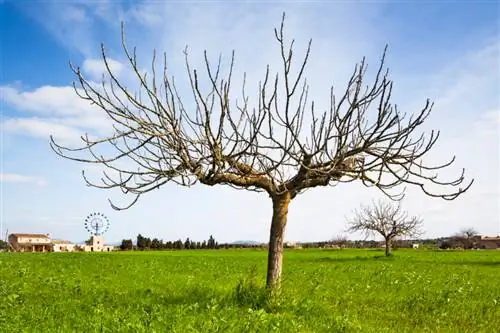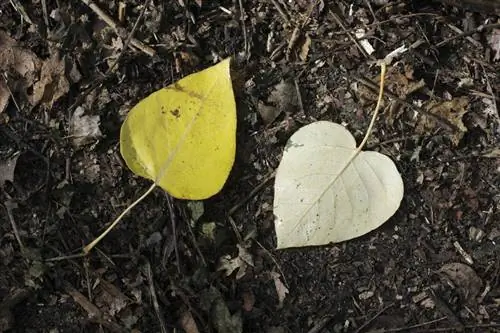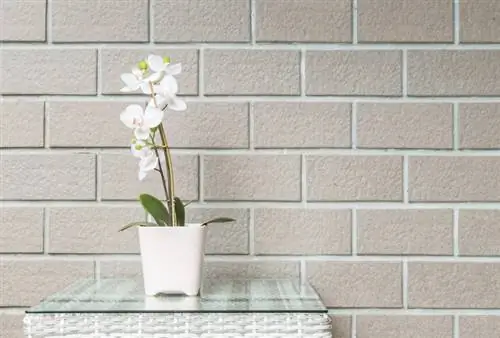- Author admin [email protected].
- Public 2023-12-16 16:46.
- Last modified 2025-01-23 11:22.
The ginkgo tree, which comes from China, is a living fossil: the tree has existed for around 250 million years. It owes its survival to its incredible adaptability, and the species is also considered extremely robust and not very susceptible to disease. But why does it suddenly drop all the leaves?

Why does the ginkgo suddenly lose its leaves?
If a ginkgo suddenly loses leaves, this can indicate a lack of water, waterlogging, root damage or vole infestation. Check the roots, adjust watering if necessary and cut off damaged plant parts.
Why does the ginkgo lose its leaves?
If the ginkgo loses its leaves in autumn, there is no reason to worry: Ginkgo biloba is not a deciduous tree, but it is not evergreen either and therefore sheds its leaves every year. It sprouts reliably again in spring.
But if the ginkgo loses its leaves in the middle of the season, it has a problem. The shedding of leaves is often due to a care error, for example because the tree is trying to compensate for water losses by having fewer leaves. In dry times, a lack of water could be the cause of leaf drop. But be careful: Excess moisture, such as waterlogging, also causes this phenomenon!
What can you do if the ginkgo loses its leaves?
If the ginkgo loses its leaves, you should first take a closer look at its roots - this is naturally easier with specimens grown in pots.
- Roots muddy, rotten: waterlogging due to too much moisture, cut away rotten roots and place ginkgo in fresh substrate
- Roots dry: too little moisture, ginkgo suffers from drought stress, cut away dried parts of the plant and dip the root ball in a bucket of water
- few roots/roots eaten: vole, install vole protection
Ginkgos kept in pots are particularly at risk from drought damage. Be careful not to let the soil dry out completely and water the potted plant carefully. What is particularly important is that the planter is large enough - the roots must have enough space to absorb enough water and nutrients - and the tree is outside.
When does the ginkgo lose its leaves in autumn?
Many new owners of a ginkgo tree also worry when the leaves turn bright yellow and fall off in autumn. This usually occurs between October and November, depending on the weather and temperature. From the end of April the ginkgo - which is absolutely frost hardy once planted - will sprout again.
Between October and March, you should overwinter ginkgos grown in pots as frost-free as possible. This is also essential for specimens cultivated as houseplants, as they need the winter break for continued he althy growth.
Tip
Be careful when transplanting the ginkgo
Ginkgo trees grow very slowly, but can become very large over the years - in our latitudes, growth heights of up to approx. 20 meters are possible. Therefore, it may be necessary to transplant the tree in the garden. Roots will inevitably be damaged. You can recognize this by symptoms such as: loss of leaves, lack of growth or sprouting of significantly smaller leaves. Give the tree time and water it well!






